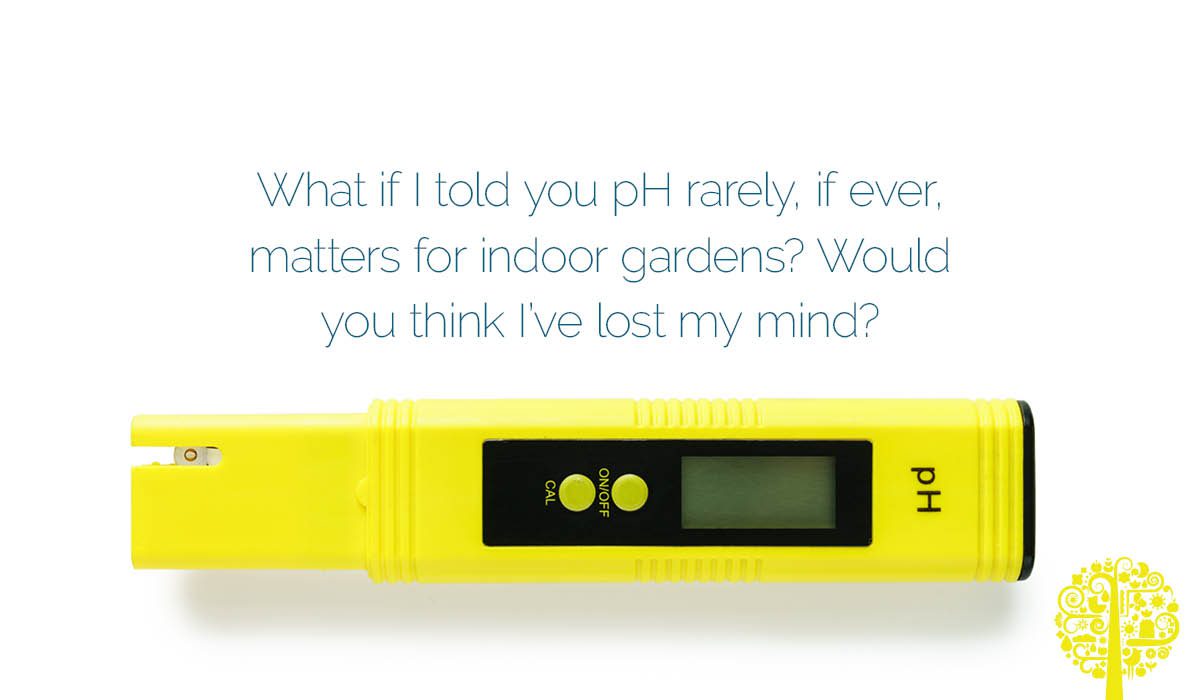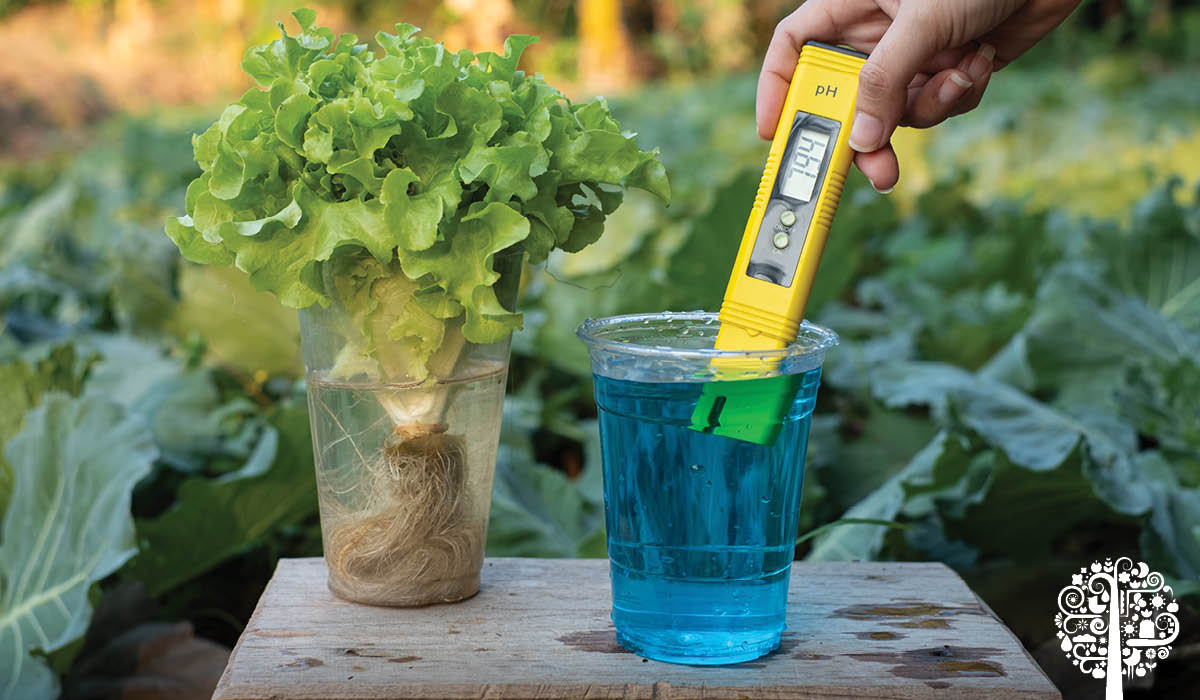There are very few hot button topics that get indoor gardeners more riled up than the concept of “perfect pH”. Some gardeners are religious zealots regarding nutrient pH; others check levels both night and day. What if I told you pH rarely, if ever, matters for indoor gardens? Would you think I’ve lost my mind?
As a trained chemist, I have conducted many experiments and preparations that required specific pH tolerances to work. Many polymers (think nylon) won’t form if pH is not in the correct range. The solution will sit there all day and not produce a thing until a few drops of acid or base are added. So it seems logical that if pH matters in wet chemistry, it should also matter in indoor gardening. But does it?
Outdoor Problems, Outdoor Solutions
Many modern indoor gardening techniques are based on scientific papers and research about outdoor gardening. Sometimes, these techniques were brought indoors with little validation of effectiveness. While some winners have been discovered this way, ineffective indoor gardening advice has also come along for the ride.

Many outdoor challenges don’t exist indoors. Outside, soil pH can slip out of the desired range from many sources. One particular outdoor problem occurs in heavily air-polluted places: acid rain. If acid rain deteriorates statues made from stone, it can lower soil pH too. Although good soil can buffer some of this change, long-term exposure has turned some regions into infertile ground.
Indoors, this is not a problem. However, if you think about how most indoor gardens operate, such as replacing the media after every grow cycle, it’s completely different from growing in Mother Earth. Modern indoor grow mixes are usually pH neutral to start. Although soil mixes can be reused (assuming there are no pests or molds), this is seldom the case indoors. Hydroponic media, such as Rockwool, are generally designed for one-time use.
Plant Control
Plants have developed many complex systems to control their rhizosphere or root zone, including altering pH. Plants attract or repel the minerals they need to grow by releasing root extrudates into the soil. These are complex sugars and starches secreted by the roots to attract (and often feed) beneficial microorganisms in the media. These beneficial organisms trap minerals in their bodies and release them to the plant upon their death. By flexing the pH of the rhizosphere through root extrudates, plants foster communities of the beneficial microorganisms that release the specific minerals they need.
An example of this is found in the relationship between mycorrhizae and phosphorus. Mycorrhizae can convert insoluble phosphorus to a form that is available to the plant. Root extrudates and the microbial composition of the plant’s rhizosphere control pH much more than anything coming out of a bottle. If pH matters, who controls the soil pH of the redwood forests?
Easy to Believe
It only takes a few minutes of searching online gardening forums to see how many people have developed complex pH schedules for their gardens. Many gardeners swear that changing the pH of their nutrients by one-tenth of a point per week (5.5, 5.6, 5.7, etc.) improves their yields. Hydroponic shops also sell dozens of pH test products and solutions. In my opinion, any improvement is probably because these gardeners are spending more time observing and catching problems earlier — not because of their fancy pH adjustments.
pH and Me
My pH mindset was altered by one grow; it was my worst garden ever. Visually, it was a mess – I knew something was wrong. The plants were stunted and not developing normally. I was aware that I was adding more pH down to my nutrient reservoir than usual but didn’t panic about that because my pH meter told me everything was fine.
The underlying problem turned out to be that my city imports water depending on supply and demand. When the source changes, so does the water’s ability to buffer its pH. The imported water’s higher level of dissolved solids caused it to change less in response to pH adjustments than local water. Therefore, depending on how the city blends local/imported water sources, the buffering quality of my local water supply can shift significantly.

It should have occurred to me that I was adding too much pH down. With things getting worse, I finally got out my old-school chemical drops to verify that the pH meter worked. It wasn’t; not by a mile. The pH meter read correctly in the calibration solution but gave a very high reading for the nutrient solution.
Frustrated, I gave up on my pH meter and decided to listen to advice about skipping the pH step. Even though the garden was suffering, it slightly improved without pH adjustments. Unfortunately, by the time I discovered the problem, it was too late for that garden. It produced a harvest, but its yield was off by about half. So I skipped pH all together for the next garden, and the results were better. Years later, and I don’t miss adjusting pH one bit. It’s so nice to be free from calibrating and cleaning a pH meter, and eliminating the pH up and down solution bottles is a bonus!
Experiment for Yourself
I get that I might be the only person you’ve heard say that you should skip the pH step altogether when it comes to nutrient solutions. However, many well-respected indoor gardening professionals stress the importance of correct pH. So, why listen to me?
Maybe you shouldn’t—experiment for yourself. Nutrient pH is like everything in life; you need to find what works for you. You may find some plants do better within a controlled pH range and others don’t. After trying a few different things, maybe you’ll join me on the “pH-free” side!